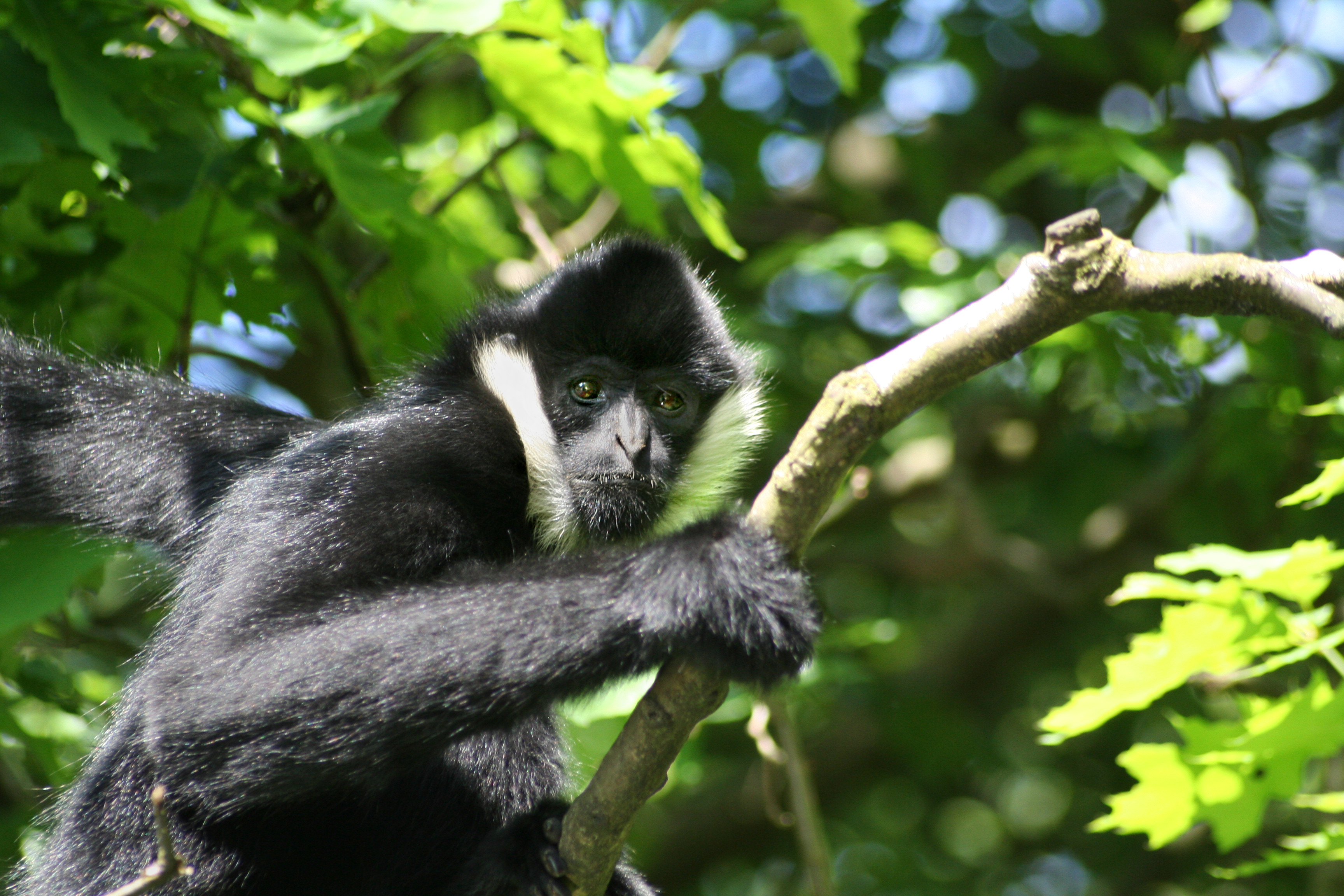Yellow-cheeked gibbon on:
[Wikipedia]
[Google]
[Amazon]
The yellow-cheeked gibbon (''Nomascus gabriellae''), also called the golden-cheeked gibbon, the yellow-cheeked crested gibbon, the golden-cheeked crested gibbon, the red-cheeked gibbon, or the buffed-cheeked gibbon, is a species of  Little is known about this species in the wild, but it is thought that it has a life span of approximately 46 years.
Gibbon groups vocalise loudly early in the morning. Their songs probably serve to defend resources such as territories, food trees, partners, but may also help to attract potential mates. Duetting occurs between mated pairs, the song is coordinated and contains sex-specific phrases.
Little is known about this species in the wild, but it is thought that it has a life span of approximately 46 years.
Gibbon groups vocalise loudly early in the morning. Their songs probably serve to defend resources such as territories, food trees, partners, but may also help to attract potential mates. Duetting occurs between mated pairs, the song is coordinated and contains sex-specific phrases.

gibbon
Gibbons () are apes in the family Hylobatidae (). The family historically contained one genus, but now is split into four extant genera and 20 species. Gibbons live in subtropical and tropical rainforest from eastern Bangladesh to Northeast Indi ...
native to Vietnam
Vietnam or Viet Nam ( vi, Việt Nam, ), officially the Socialist Republic of Vietnam,., group="n" is a country in Southeast Asia, at the eastern edge of mainland Southeast Asia, with an area of and population of 96 million, making ...
, Laos
Laos (, ''Lāo'' )), officially the Lao People's Democratic Republic ( Lao: ສາທາລະນະລັດ ປະຊາທິປະໄຕ ປະຊາຊົນລາວ, French: République démocratique populaire lao), is a socialist s ...
, and Cambodia
Cambodia (; also Kampuchea ; km, កម្ពុជា, UNGEGN: ), officially the Kingdom of Cambodia, is a country located in the southern portion of the Indochinese Peninsula in Southeast Asia, spanning an area of , bordered by Thailand ...
. The species was discovered and named after the British naturalist Gabrielle Maud Vassal.
The yellow-cheeked gibbon is born blond and later turns black. Males carry this colouring through their lifespan and have the distinguishing golden cheeks. Females are born blonde to blend into their mother's fur but they later turn black. Females turn back to blond at sexual maturity, keeping only a black cap on the top of their heads.
This diurnal and arboreal gibbon
Gibbons () are apes in the family Hylobatidae (). The family historically contained one genus, but now is split into four extant genera and 20 species. Gibbons live in subtropical and tropical rainforest from eastern Bangladesh to Northeast Indi ...
lives in primary tropical forest
Tropical forests (a.k.a. jungle) are forested landscapes in tropical regions: ''i.e.'' land areas approximately bounded by the tropic of Cancer and Capricorn, but possibly affected by other factors such as prevailing winds.
Some tropical fore ...
, foraging for fruits, using brachiation
Brachiation (from "brachium", Latin for "arm"), or arm swinging, is a form of arboreal locomotion in which primates swing from tree limb to tree limb using only their arms. During brachiation, the body is alternately supported under each forelimb ...
to move through the trees.
Conservation and rehabilitation
The largest known population of this species is found in Cambodia’sKeo Seima Wildlife Sanctuary
Keo Seima Wildlife Sanctuary ( Khmer: ដែនជម្រកសត្វព្រៃកែវសីមា) is a protected area of mixed seasonal tropical forest in eastern Cambodia, located in Mondulkiri and Kratié provinces. The area was f ...
, estimated at 1432 individuals in 2020. The population appears to be stable over the last decade. There are several conservation programs active at the site, including protected area management supported by Wildlife Conservation Society
The Wildlife Conservation Society (WCS) is a non-governmental organization headquartered at the Bronx Zoo in New York City, that aims to conserve the world's largest wild places in 14 priority regions. Founded in 1895 as the New York Zoological ...
and a community ecotourism project centered on habituated gibbons. A large protected wild population can be found in Cat Tien National Park
The cat (''Felis catus'') is a domestic species of small carnivorous mammal. It is the only domesticated species in the family Felidae and is commonly referred to as the domestic cat or house cat to distinguish it from the wild members of ...
: where a collaboration with the Endangered Asian Species Trust (UK), and Pingtung Wildlife Rescue Centre (Taiwan) founded the Dao Tien Endangered Primate Species Centre, which specialises on the rescue, rehabilitation and release of ''N. gabriellae'' and other endangered primates.

References
{{Taxonbar, from=Q153433 yellow-cheeked gibbon Primates of Southeast Asia Mammals of Cambodia Mammals of Laos Mammals of Vietnam Endangered fauna of Asia Species endangered by the pet trade yellow-cheeked gibbon yellow-cheeked gibbon